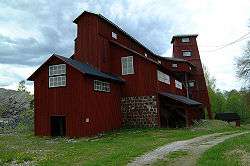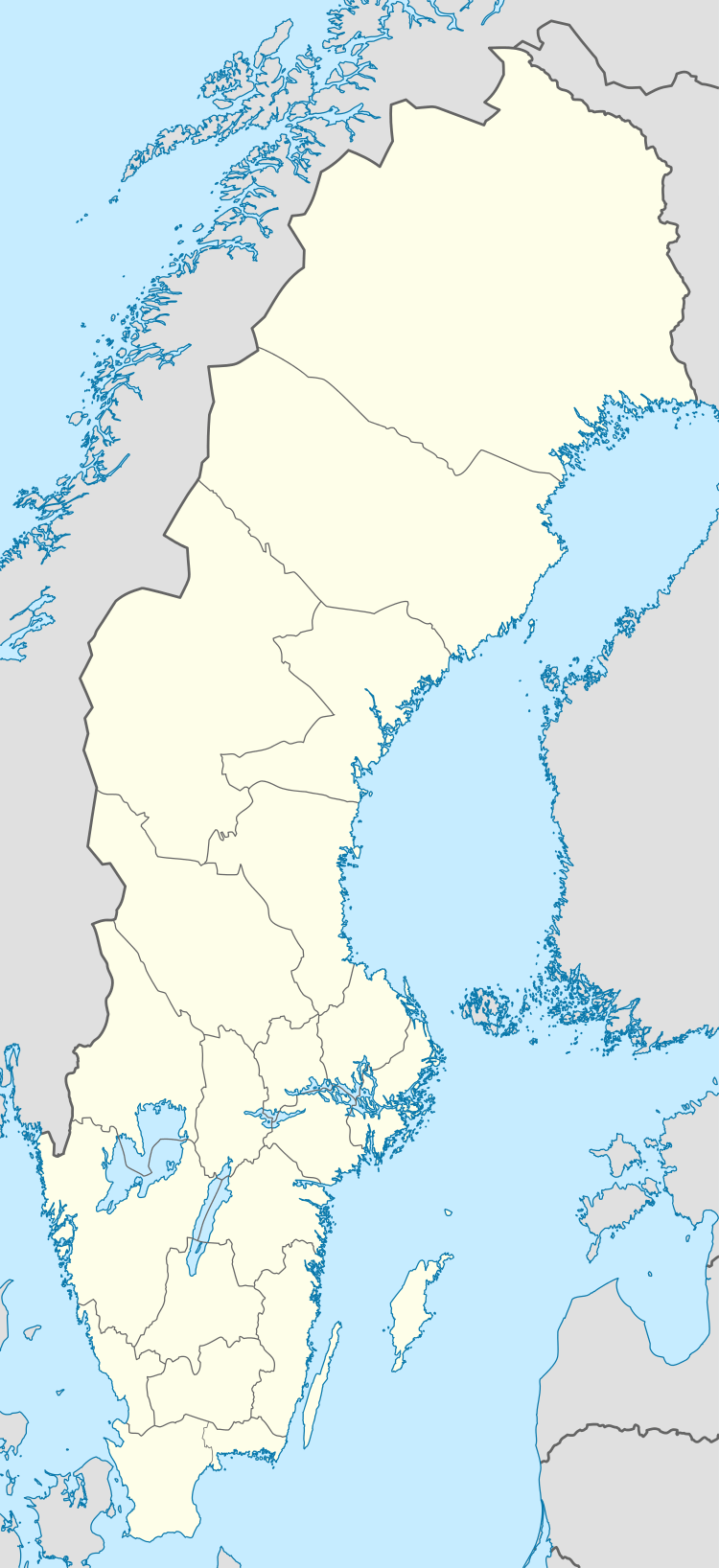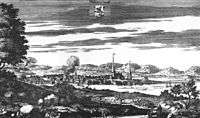Filipstad
Filipstad is a locality and the seat of Filipstad Municipality, Värmland County, Sweden, with 10,644 inhabitants in 2019.[3]
Filipstad | |
|---|---|
 | |
 Filipstad | |
| Coordinates: 59°43′N 14°10′E | |
| Country | Sweden |
| Province | Värmland |
| County | Värmland County |
| Municipality | Filipstad Municipality |
| Area | |
| • Total | 6.51 km2 (2.51 sq mi) |
| Population (31 December 2019)[1] | |
| • Total | 10,644 [2] |
| • Density | 925/km2 (2,400/sq mi) |
| Time zone | UTC+1 (CET) |
| • Summer (DST) | UTC+2 (CEST) |
| Climate | Dfb |
Filipstad was granted city privileges in 1611 by Charles IX of Sweden, who named it after his son Duke Carl Philip (1601–1622; younger brother of Gustavus Adolphus).
After a major fire destroyed forest and town in 1694, Filipstad lost its privileges, as it was believed the remaining forest would not be sustainable if the town were to be rebuilt. In 1835 the rights were regranted. The local government acts of 1862 made the very privileges obsolete, but the title stad (city) remained in use until the municipal reform of 1971. Since then Filipstad is the seat of the larger Filipstad Municipality. Filipstad is, despite its small population, for historical reasons, normally still referred to as a city. Statistics Sweden, however, only counts localities with more than 10,000 inhabitants as cities.
At Filipstad, there is Klockarhöjdenmasten, a 330 metres tall guyed mast used for FM/TV-broadcasting.
Wasabröd, the largest crisp bread manufacturer in the world, has one of its two factories in Filipstad, the other being in Celle, Germany.[4]
Notable natives
- Nils Ferlin, poet
- John Ericsson, inventor
- Nils Ericsson, engineer
- Magnus Norman, tennis player
- Edvin Kallstenius, composer
- Anders Forsbrand golf player

References
| Wikimedia Commons has media related to Filipstad. |
- "Tätorternas landareal, folkmängd och invånare per km2 2005 och 2010" (in Swedish). Statistics Sweden. 14 December 2011. Archived from the original on 10 January 2012. Retrieved 10 January 2012.
- Updated population list on the towns official website
- Updated population numbers for the towns official website
- "Wasa: About the Company2". Wasa-usa.com. 14 December 2011. Archived from the original on 14 March 2014. Retrieved 13 March 2014.